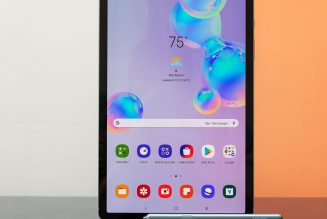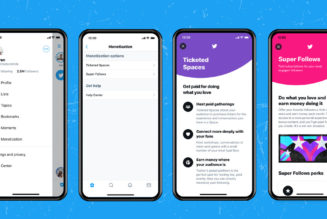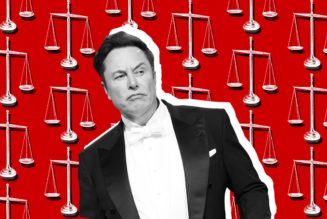The state of US broadband is bad. We already know huge portions of the country aren’t getting broadband speeds — but even where they are, those connections are often bogged down by limited options, predatory billing practices, and a general lack of choice. And because of the sorry state of federal data collection, measuring the full scope of the problem is difficult.
So last year, we took things into our own hands. In partnership with Consumer Reports, we asked readers to share their internet bills with us, and more than 22,000 of you did. The Consumer Reports data team has spent more than a year poring through that data, and together we’ve assembled a kind of snapshot of how much people are paying for internet access in the US.
To be clear, this isn’t a standard statistical survey. The 22,000 bills we got are specific to our readers, so they’re not predictive or representative of the national broadband market. Having said that, this is one of the most ambitious efforts of its kind to understand and gives a unique look into what broadband access really looks like in America.
Consumer Reports has a more detailed and methodical writeup of the data where you can get into the weeds of exactly what we found and how we analyzed it. But for our side of things, we’re trying to take a bird’s-eye view of what we found out and what it says about the experience people are having with the companies they’re paying every month.
In short, this is what’s wrong with broadband in America.
:no_upscale():format(webp)/cdn.vox-cdn.com/uploads/chorus_asset/file/24204327/226352_What_s_wrong_with_US_broadband_ECarter_02.gif)
a:hover]:text-gray-63 text-gray-63 dark:[&>a:hover]:text-gray-bd dark:text-gray-bd dark:[&>a]:text-gray-bd [&>a]:shadow-underline-gray-63 [&>a:hover]:shadow-underline-black dark:[&>a]:shadow-underline-gray dark:[&>a:hover]:shadow-underline-gray”>Erik Carter for The Verge
a:hover]:shadow-highlight-franklin [&>a]:shadow-underline-black dark:[&>a:hover]:shadow-highlight-franklin dark:[&>a]:shadow-underline-white md:text-40 lg:-ml-100″>It’s expensive
This is the most basic fact about all of it, something you’ve almost certainly noticed if you’ve picked up an internet bill. On average, the folks in our sample pay about $75 a month for internet access — a bit higher than previous estimates but certainly nothing unheard of. There are a few folks paying $150 or more, but they’re pretty clearly outliers.
:format(webp)/cdn.vox-cdn.com/uploads/chorus_asset/file/24204403/vdMhE_bill_count_by_price_range.png)
For most Americans, that will probably sound normal — but it shouldn’t. For a start, it’s more than people are paying in other countries. Our survey only looked at US customers, but there are plenty of other surveys that can give you a sense of the international picture. One survey done by the Open Technology Institute in 2020 found consistently lower prices in Europe, dropping as low as $31 in Paris and $40 in London.
:format(webp)/cdn.vox-cdn.com/uploads/chorus_asset/file/24204432/s9oYf_mean_internet_price_per_provider.png)
Not all of the price difference is nefarious. Countries that have lower prices often have slower connections, so the picture gets slightly better if you go by price per megabit — although not enough to completely close the gap. There are lots of intangibles that could fill the rest of the gap, whether it’s less downtime or more stable speeds.
But the simple fact is that we’re paying more, which raises the difficult question of whether we’re getting our money’s worth.
:no_upscale():format(webp)/cdn.vox-cdn.com/uploads/chorus_asset/file/24204328/226352_What_s_wrong_with_US_broadband_ECarter_03.gif)
a:hover]:text-gray-63 text-gray-63 dark:[&>a:hover]:text-gray-bd dark:text-gray-bd dark:[&>a]:text-gray-bd [&>a]:shadow-underline-gray-63 [&>a:hover]:shadow-underline-black dark:[&>a]:shadow-underline-gray dark:[&>a:hover]:shadow-underline-gray”>Erik Carter for The Verge
a:hover]:shadow-highlight-franklin [&>a]:shadow-underline-black dark:[&>a:hover]:shadow-highlight-franklin dark:[&>a]:shadow-underline-white md:text-40 lg:-ml-100″>Most people can’t choose their carrier
It’s the iron law of internet access: if you don’t like your carrier, you’re probably stuck with them — and when they know you’re stuck, you end up paying more.
:format(webp)/cdn.vox-cdn.com/uploads/chorus_asset/file/24204438/nzLPQ_bill_count_per_number_of_vendors_in_a_zip_code.png)
Those two claims might seem obvious, but proving them is harder than you might think. The FCC maintains a comprehensive map of US telecom coverage, but those maps rely on self-reported ISP data, which means they tend to paint an optimistic picture of what’s actually available. Put simply, telecoms will claim to cover large areas where they’ve never actually run a line.
Our data gives a peek at the broader problem, but we should be up-front about the drawbacks. Even with 20,000 bills, we have only limited coverage of the 40,000-plus ZIP codes in the US, so anyone who showed up as the only bill in a ZIP code is automatically getting lumped in the “1” column. Even if there’s more than one bill in a ZIP code, it’s unlikely we’ve clocked every single carrier in the region. In short, we don’t really know how many options most of these folks have; we can only make guesses based on the data.
:format(webp)/cdn.vox-cdn.com/uploads/chorus_asset/file/24204439/rZoLj_mean_price_of_internet_based_on_the_number_of_reported_vendors_in_a_zip_code.png)
Having said that, there’s already ample evidence suggesting that a lack of choice is a problem. A 2020 study from ILSR found that 83.3 million Americans have only one broadband option, despite slower DSL lines increasingly being offered as an alternative. We know this is hurting consumers; the question is just how much.
That’s where the collected data starts to be really useful. Even with our limited data, we can see a pretty clear trend for ZIP codes with more than one bill in the database: as you have more options, service gets cheaper. So it’s not a huge difference — the split between having a sole provider and three or more only added up to a few dollars on average — but it’s a reminder of how grim the outlook can be without meaningful competition.
:no_upscale():format(webp)/cdn.vox-cdn.com/uploads/chorus_asset/file/24204329/226352_What_s_wrong_with_US_broadband_ECarter_04.gif)
a:hover]:text-gray-63 text-gray-63 dark:[&>a:hover]:text-gray-bd dark:text-gray-bd dark:[&>a]:text-gray-bd [&>a]:shadow-underline-gray-63 [&>a:hover]:shadow-underline-black dark:[&>a]:shadow-underline-gray dark:[&>a:hover]:shadow-underline-gray”>Erik Carter for The Verge
a:hover]:shadow-highlight-franklin [&>a]:shadow-underline-black dark:[&>a:hover]:shadow-highlight-franklin dark:[&>a]:shadow-underline-white md:text-40 lg:-ml-100″>They add bogus charges
This is maybe the most annoying part. Even when the prices are both high and inescapable, they still find a way to add a little more on top.
The fees represented by the dark green bars are the main offenders here, and you can probably find a few on your own internet bill, labeled as things like “internet infrastructure fee” or “network enhancement fee” or the myriad data cap-related fees charged by some ISPs for going over the data cap or expensive “unlimited data allowance” fees to avoid the cap. For the purposes of keeping our charts tidy, we’re calling them all by the same name (“company-imposed fees”) because they’re all basically made up. There is only minimal cost associated with providing DNS or IP services and no relationship between that minuscule cost and the fee they’re charging you. Even if there were, there’s no reason they can’t bundle those costs into the overall price of the service like every other business. It’s nonsense — the telecom equivalent of selling you a $5 sandwich and then adding a 50 cents “mustard fee.”
:format(webp)/cdn.vox-cdn.com/uploads/chorus_asset/file/24204445/Ic1GI_company_imposed_fees.png)
Equipment fees are slightly more legitimate. They usually mean your ISP is renting you a router, and you can get out of it by buying your own (which will almost certainly be cheaper and less hassle in the long run). Most people don’t do that, but at least it’s possible.
Still, the sheer variety of fees is worthy of some shaming. It’s part of a broader strategy of puffing up prices and confusing customers into bewildered compliance. Some providers are worse than others (congratulations to Sonic and TDS for being the least bad of the bunch), but everyone’s doing at least some of it. And with no clear incentives for good behavior, it seems unlikely we’ll see any of these fees go down in the future.
:no_upscale():format(webp)/cdn.vox-cdn.com/uploads/chorus_asset/file/24204330/226352_What_s_wrong_with_US_broadband_ECarter_05.gif)
a:hover]:text-gray-63 text-gray-63 dark:[&>a:hover]:text-gray-bd dark:text-gray-bd dark:[&>a]:text-gray-bd [&>a]:shadow-underline-gray-63 [&>a:hover]:shadow-underline-black dark:[&>a]:shadow-underline-gray dark:[&>a:hover]:shadow-underline-gray”>Erik Carter for The Verge
a:hover]:shadow-highlight-franklin [&>a]:shadow-underline-black dark:[&>a:hover]:shadow-highlight-franklin dark:[&>a]:shadow-underline-white md:text-40 lg:-ml-100″>There is no escape from fiber
We’re a tech blog at heart, so it’s always tempting to think some new technology will rescue us from this kind of problem. In the case of internet access, that technology is satellite internet. The economics of laying fiber encourage this kind of rent-seeking, so maybe escaping fiber will let us build a better kind of telecom?
:format(webp)/cdn.vox-cdn.com/uploads/chorus_asset/file/24204451/Oh3JV_mean_price_per_satellite_vendor.png)
Someday, perhaps — but we are not there yet. Verge editor-in-chief Nilay Patel went into the issues with Starlink last year (to put it generously, it’s still very much in beta), but it’s not limited to any single service. Providers like HughesNet, Dish, and Viasat have been delivering satellite connectivity for decades, and while newer generations have gotten better, they haven’t changed the basic challenges. It’s hard to deliver reliable service over satellite; it takes a lot of equipment and ends up not much cheaper than relying on terrestrial fiber. Unless you’re remote enough that satellite is your only option, it usually doesn’t make sense.
:format(webp)/cdn.vox-cdn.com/uploads/chorus_asset/file/24204455/v9vdF_bill_count_for_both_satellite_and_not_satellite.png)
The data we collected bears this out. For a start, only a tiny fraction of the people who sent in bills were using satellite service: just 274 bills out of more than 18,000 total. For those who were using satellite, the prices weren’t that different from the average wired connection — and that’s before factoring in the quality of the connection. That doesn’t mean the satellite revolution won’t make things better; it just means it isn’t here yet.
In the meantime, we’ll have to make the best of what we’ve got.









